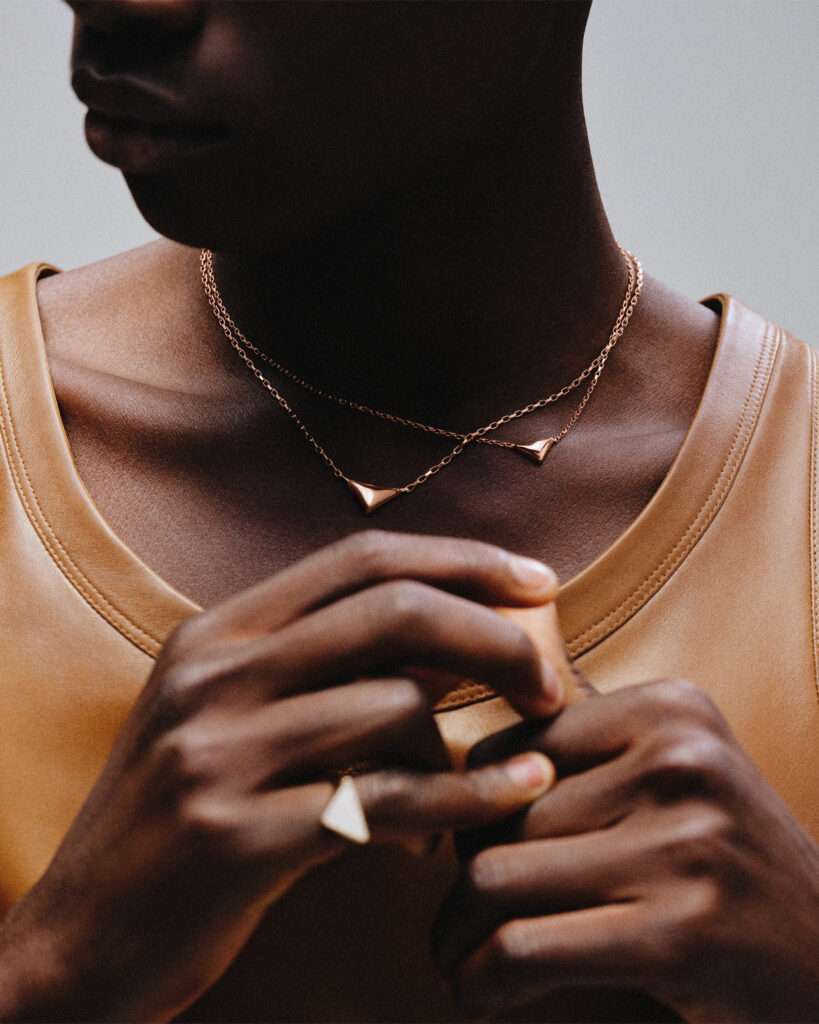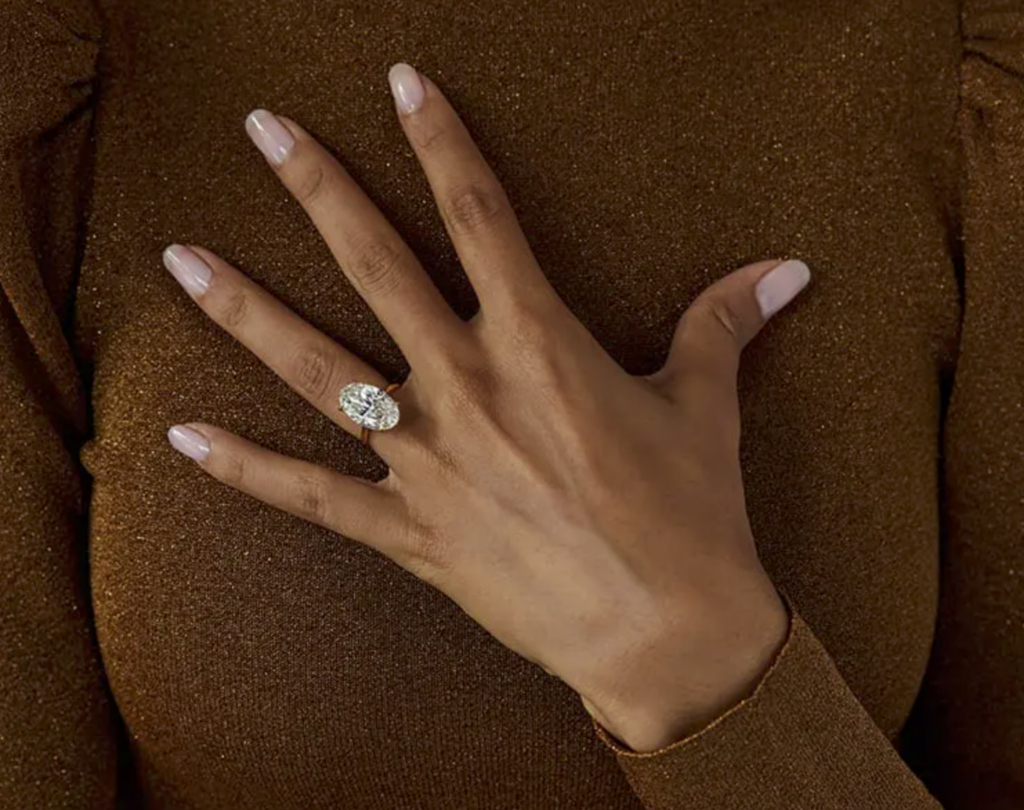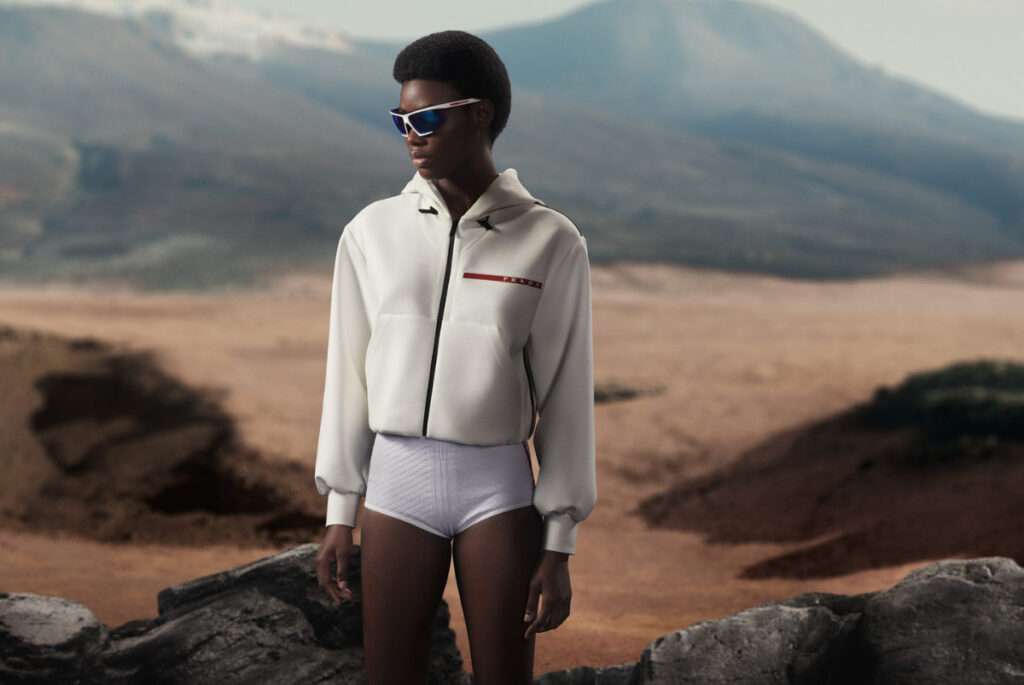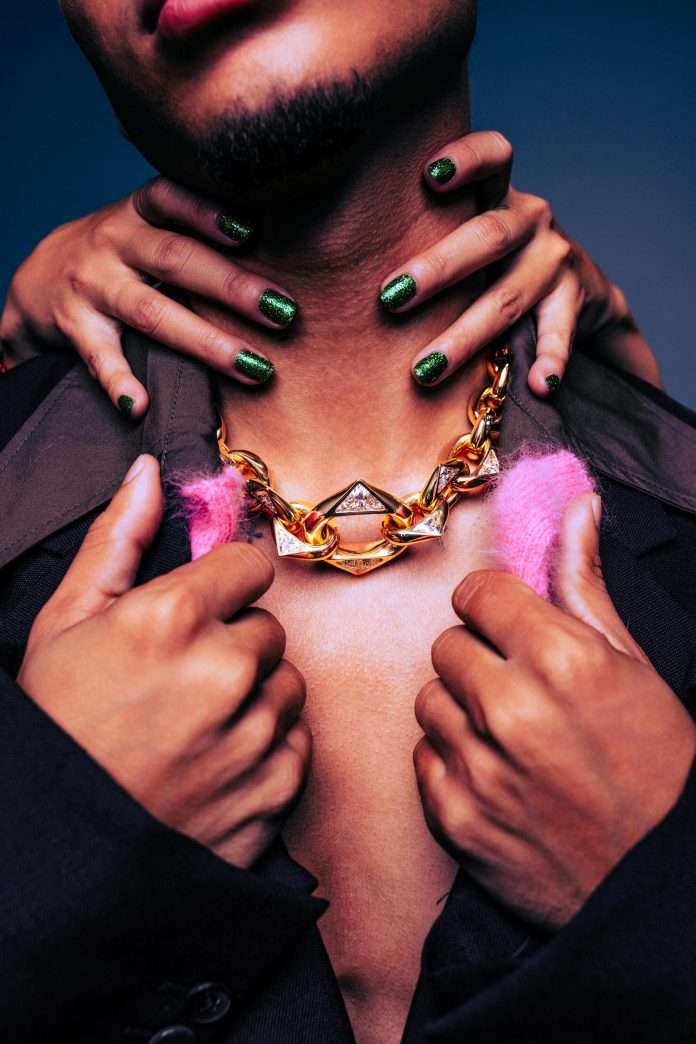If history is any indicator, Prada will make lab-grown diamonds as widely accepted as its made turning recycled plastic into nylon.
Last year, Prada debuted its first Eternal Gold jewelry collection. The Italian luxury label said its commitment marked the first time a global luxury brand launched a “truly sustainable” fine jewelry collection using 100 percent certified recycled gold that meets ‘Chain of Custody’ standards set by the Responsible Jewelry Council. “Sustainability is built into the core of Eternal Gold, reflecting Prada’s wide-ranging commitment to conscious and responsible practices across every facet of its business,” the company said in a statement.
In October, a year after the jewelry collection launch, Prada debuted a new Eternal Gold collection featuring lab-grown diamonds — part of its commitment to use lab diamonds by the end of the year exclusively. The label brings a unique twist to these lab-grown gems by having them cut in the distinctive “Prada-cut,” which mimics the shape of its iconic triangular logo. The new collection features heart-shaped earrings with a diamond triangle, snakelike rings with diamond heads, and a necklace featuring rings of gold studded with diamonds.
“Yes, it is an unprecedented territory,” Lorenzo Bertelli — the company’s head of corporate social responsibility — told the Washington Post in October. “Entering the laboratory-grown diamond market is part of Prada’s creative philosophy of re-imagining products through innovative materials and processes.”

Prada’s embrace of lab-grown diamonds follows the footsteps of other major players in the luxury market, particularly within the LVMH group. Earlier in the year, TAG Heuer launched a $376,000 Carrera Plasma watch that features a 2.5-carat lab-grown diamond shaped like the watch’s crown and an additional 9.5 carats of lab-grown diamonds. Last month, Fred, another luxury brand under LVMH, introduced its Force 10 Duality high jewelry set. This set includes a necklace, bracelet, ring, a single earring, and a loose 8.88-carat diamond, all priced at $559,000.
Lab-grown diamonds are indeed having a moment. CNN dubbed 2023, “the year of the lab-grown diamond.” The sector is booming; it was valued at $10.8 billion in 2022 and is expected to reach $20.6 billion by 2032.
Los Angeles-based jeweler Jean Dousset — great-great-grandson of Cartier founder Louis Cartier — only works with lab-grown diamonds. In November, at the first Ethos Good Nature event in Los Angeles, Dousset told the crowd that mined diamonds, along with their labor and environmental issues, will soon become a thing of the past as lab diamonds rise in popularity without compromising quality.
Lab-grown diamonds are identical to mined diamonds in every meaningful way, including the “4Cs” (cut, color, clarity, and carat). The only difference between the diamonds is dividing the industry — are diamonds grown in labs rather than extracted from the earth still as valuable?

It’s a contentious question; legacy labels including Cartier and Tiffany & Co. continue to eschew lab-grown diamonds even though consumers embrace them en masse. Diamonds made in a lab can retail for nearly half the price of mined diamonds. They also do away with much of the human rights and labor issues. And when produced with renewable energy sources, they’re far less damaging to the environment than mining.
Lab-grown diamonds could also help to increase transparency and traceability — something that’s been a struggle for the industry. Conventional diamonds are mined in one place, then sold to traders, who send them somewhere else for polishing, then they’re sent to wholesalers who prepare them for retail. Growing in a lab can eliminate some of these steps. The Leonardo DiCaprio-backed lab-grown diamond producer Diamond Foundry, for example, has a consumer-facing label, Vrai.
Prada’s venture into lab-grown diamonds could help further reshape consumer perceptions and industry practices. It’s done it before, with a recycled nylon material Econyl, which it dubs, Re-Nylon.
Econyl is made in partnership with Aquafil, an Italian textile yarn producer. The textile comes from recycled plastic waste, including ocean-bound plastic, fishing nets, and landfill and textile waste — and can be recycled indefinitely.
Like conventional nylon, Econyl is a lightweight, breathable, and durable material that is resistant to fading, staining, and wrinkling. But unlike conventional nylon, Econyl actively contributes to the reduction of global warming by up to 90 percent compared to virgin nylon. For every 10,000 tons of Econyl created, 70 barrels of petroleum are saved and more than 65 tons of CO2 emissions are reduced.

“A vital component of Prada’s heritage and a hallmark of its approach to contemporary fashion, nylon is an emblem of the brand DNA,” the label says on its website. “The Prada Re-Nylon project represents a commitment to sustainable and truly responsible practice.”
By the end of 2021 Prada met its target to transition away from virgin nylon to Re-Nylon. The shift hasn’t hindered the label’s sales, either. While the luxury sector showed signs of a slowdown this year, Prada Group revenues grew 17 percent to €3.34 billion for the nine months ending in September. For Prada, sales were up 13 percent, and for spinoff label Miu Miu, sales jumped 49 percent to €2.98 million, a 17 percent year-on-year increase, according to Vogue Business.
“Our strategy delivered solid growth in the first nine months of 2023, including in the third quarter, notwithstanding the very challenging basis of comparison. The group continued to consolidate its brands’ desirability and accelerated investments as planned,” Bertelli, said in a statement.
“The global context we operate in continues to be complex and ever-changing, but our strategic priorities are clear, our organization stronger, and the group remains reactive,” Bertelli said.
“We look at the future with confidence, determined to continue our path of stable and sustainable growth.”
Related on Ethos:


